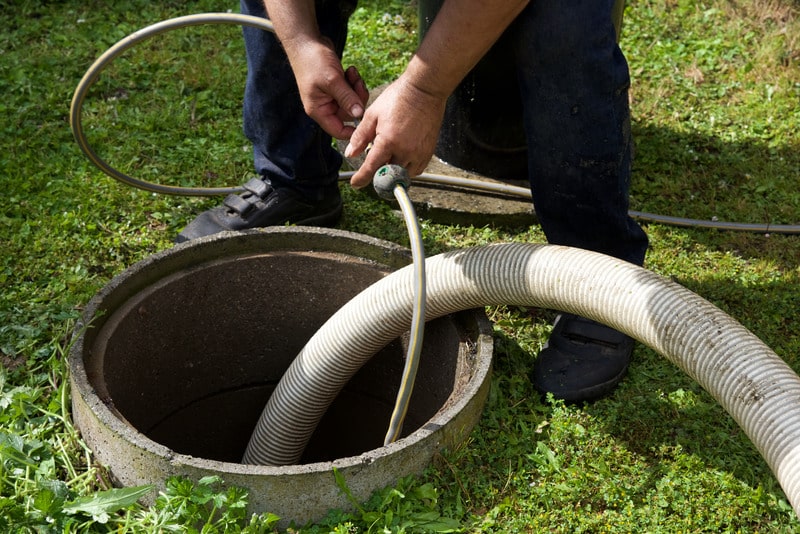The 9-Second Trick For Stillwell Septic And Grading
The 9-Second Trick For Stillwell Septic And Grading
Blog Article
Stillwell Septic And Grading Can Be Fun For Anyone
Table of ContentsThe 6-Minute Rule for Stillwell Septic And GradingSome Known Facts About Stillwell Septic And Grading.Stillwell Septic And Grading Can Be Fun For EveryoneHow Stillwell Septic And Grading can Save You Time, Stress, and Money.Unknown Facts About Stillwell Septic And GradingEverything about Stillwell Septic And Grading
A leaking commode can throw away hundreds of gallons of water a day. Take baths with a partially-filled tub and do not leave the tap running when doing various other jobs. Laundry just complete tons of recipes and washing.
The Ultimate Guide To Stillwell Septic And Grading
Avoid melting heaps of leaves or branches over the drainfield, as the warm might damage the plastic pipes below. Limit the enhancement of topsoil or compost to no greater than 2 to 3 inches over the drainfield. Setpic System Repairs. A great guideline for landscape design over drainfields is to use shallow-rooted plants that do not need extra topsoil to thrive
Grass is the best cover. Avoid trees, hedges, and water-loving plants with deep roots. Turfs, blended wildflowers, and ground covers with superficial origins are great choices. Plant trees and hedges a minimum of 30 feet far from your septic storage tank and drainfield to maintain origins from getting involved in and breaking or clogging the drainfield pipelines.
A septic system failure triggers without treatment sewage to be launched and carried to where it must not be. This may cause sewage to come to the surface of the ground around the storage tank or the drainfield or to back up in pipelines in the structure.
See This Report about Stillwell Septic And Grading
In many instances, the individual who falls in ventures out without significant injury. A youngster's awful fatality is a reminder to inspect your septic system for damaged or missing lids. https://yoomark.com/content/httpswwwstillwellsepticco. Proprietors of septic systems are in charge of making certain the systems are risk-free and function effectively, consisting of having a secure cover on the tanks
Use screws, screws, or other locks to protect the lids and protect against very easy accessibility. Never ever drive or park cars on top of septic systems- it can harm or displace the cover.
Excitement About Stillwell Septic And Grading
Ensure the covers are safeguarded after dealing with your septic tank. Instruct kids that the septic container lids are not to be used or opened up. Have septic tanks that are no more in use appropriately deactivated. For various other basic secure methods around septic tanks please testimonial the Septics 201 Do It Yourself Program Septic Safety Tips.
Noting the levels will certainly help establish if there is a prospective issue with the system. Then, the tank will be completely pumped down, getting rid of all of the liquid and strong waste. When the container is totally pumped, the inlet and outlet tees of the will certainly be checked to ensure they are still undamaged and working correctly
Stillwell Septic And Grading Can Be Fun For Everyone
If you are home at the time of service (totally not required if that's not your point) you might be asked to flush your commodes to make sure every little thing is streaming appropriately. When the service is full, the septic tank will certainly be covered as it was when we got here! Experts suggest having your system pumped every 3 to 5 years but several elements must be considered when choosing exactly how usually your septic system requires to be serviced.

If your septic has not been serviced in even more than 6 months, we would certainly desire to service the septic. If the issue continues, a drain cleaner will after that be sent out to get rid of the line to the septic storage tank.
Some Known Facts About Stillwell Septic And Grading.

If the ponding is concentrated over the leach area that can mean a leach line is blocked with Bio-Mat and requires to be repaired or replaced. The majority of septic systems have two to three covers; one over the inlet side of the septic system (where the water from your home gets in the tank), one in the center of the container, and one on the outlet side of the tank (where the liquid from the tank exits to your leach area).
Sliced up food particles do not break down in the sewage-disposal tank and can make their escape right into your leach field lines creating obstructions. Rubbish disposals, even those marked septic risk-free, are not thought about useful for your septic tank. Proper functioning degree is where the water level in your container meets the electrical outlet tee of the tank.
Report this page